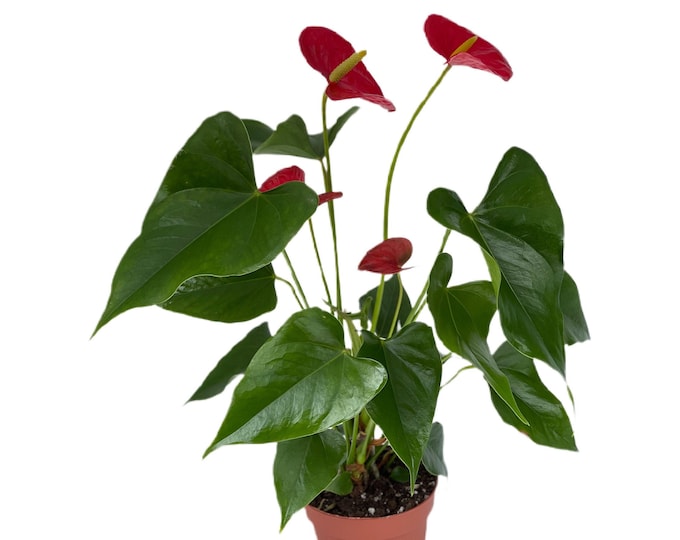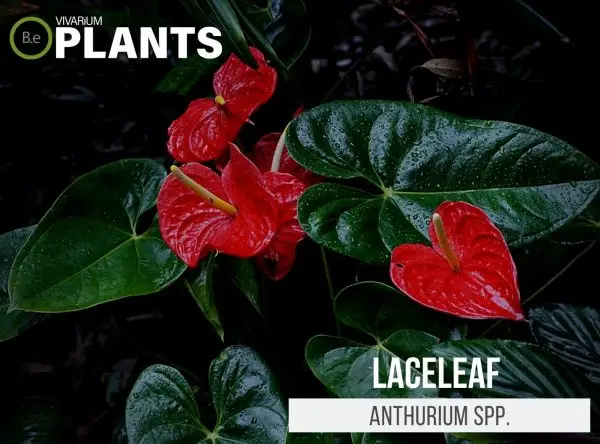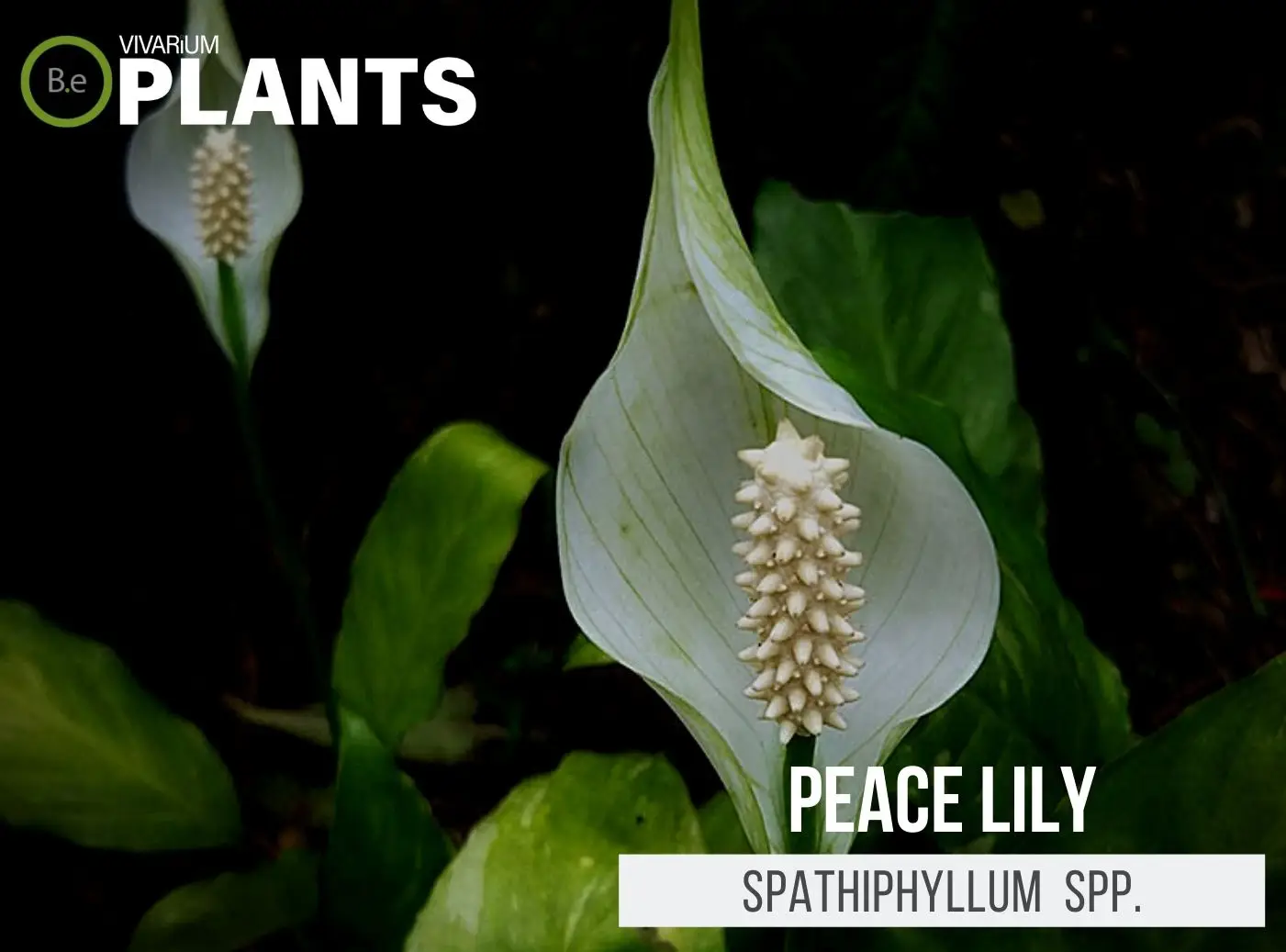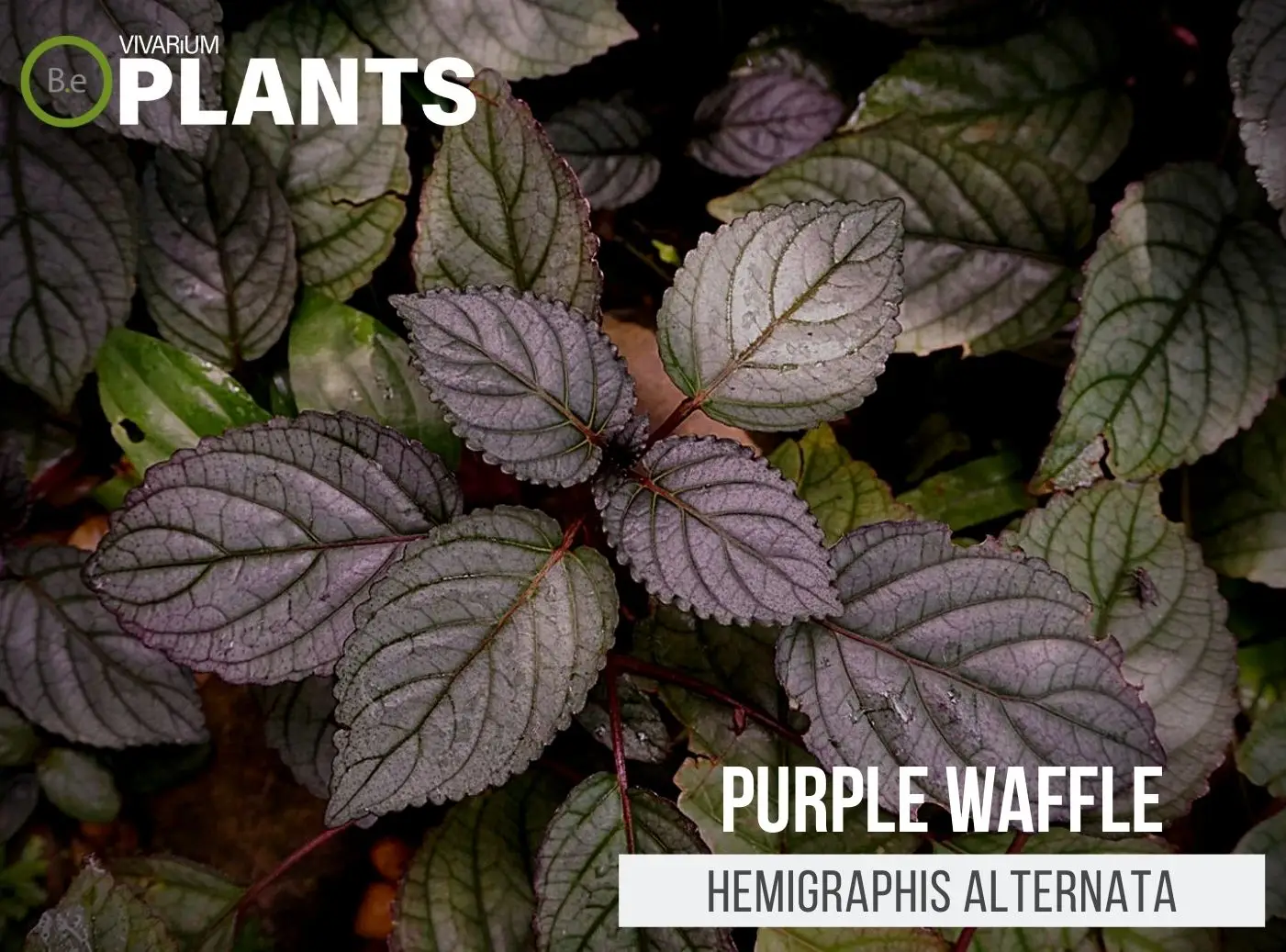Laceleaf Anthurium is a vibrant and interesting addition to tropical vivariums.
They are a popular choice because of their striking foliage that instantly adds a unique look to any landscape.
These plants are low maintenance and can easily adapt to the conditions of the enclosure.
Anthurium is a highly recommended tropical terrarium plant for new hobbyists and experienced alike.
| Quick Stats: | |
|---|---|
| Scientific Name | Anthurium spp. |
| Common Name | Arche, Tail flower, Laceleaf Anthurium, Oilcloth Flower, Painter’s Palette |
| Family Name | Araceae |
| Habitat | Tropical rainforest |
| Temperature | 70°F to 75°F |
| Height | 2 to 3 feet |
| pH | 6.0 to 7.0 |
| Lighting | Bright, indirect |
Table Of Contents:
ToggleWhat is a Laceleaf?
Anthurium is a genus of flowering plants that are native to the Americas, particularly the humid forests of Central and South America.
There are over 800 species, with their main standout characteristics being colorful spadices, which can range from white to purple.
Laceleaf Anthurium is a popular species in tropical vivariums due to its foliage, which is usually red or dark green with intricate counting.


Laceleaf Facts
Anthurium produces bright spadices (colored spathes) that, although vibrant, are relatively short-lived blooms that require perfect conditions in order to be seen.
These bloom sitings are typically less common in a vivarium.
What makes them popular for vivariums, is their incredibly beautiful foliage that grows in a lacy pattern and is often variegated with greens, reds, and purples.
Description
Laceleaf is a slow-growing tropical plant that typically reaches heights between 2 and 3 feet.
Its bright, colored leaves are its most striking feature and can range from a deep red or purple, to lighter greens and whites.
The surfaces of the leaves have a glossy sheen which gives them an extra touch of vibrancy.
Habitat
Anthurium is naturally found in the tropical rainforests of Central and South America where the air is humid and warm, and the light has a lower intensity.
PH Preference
The pH level that Laceleaf Anthurium prefers is slightly acidic, with an ideal range of 6.0 to 7.0.
If the pH level is too low, it can cause nutrient deficiencies, while if it is too high, it can cause a growth slump.
Vivarium Type
The laceleaf is quite an easy-going species. With that in mind, it will not be too complicated when it comes to choosing the type of enclosure it is grown in.
It is best to try and replicate the plant’s natural habitat as much as possible.
Doing so will make it easier to provide this foliage plant with its basic needs.
The proper setup and theme of the enclosure will make a big difference to the overall look and health of the plant.
Be sure to choose setups that are moist and high in humidity.
Here are recommended vivariums it will do well in:
- Paludariums – Half aquatic/ half terrain-based enclosure.
- Terrariums – Fully terrain-based enclosures with little to no aquatic features.
Vivarium Placement
Laceleaf Anthurium is a terrestrial plant, meaning that it prefers to grow on the floor of the enclosure rather than being suspended like some other plants.
As such, it makes a great backdrop or understory plant that can be placed in the middle or back of the terrarium.
Substrate
A substrate with good drainage and organic matter mixed in will help provide nutrients and moisture for laceleaf to thrive.
A mix of sphagnum moss and soil is recommended. Also, the addition of bits of activated charcoal helps provide extra drainage and nutrients for the plant.
Lighting
Anthurium prefers bright, indirect light. For prolonged periods, lower intensity of light with cooler temperatures should be present in the terrarium.
This can be achieved with LED fixtures, fluorescent lamps, or high-pressure sodium lighting.
Buy Laceleaf
When it comes to buying laceleaf, there are a few things to keep in mind.
Making sure the plant is healthy when purchased is essential for its success in a vivarium.
Vegetation that is already in poor conditions will have a very hard time adjusting to new environments.
Click the image below to find out more about the current price and other relative info about this plant.


Laceleaf Care and Propagation
Anthurium is incredibly easy to take care of and can survive in a variety of conditions.
They are also relatively easy to propagate, simply by taking small cuttings of the main stem and planting them in a new pot.
The stem will put its foot down roots and start growing into a mature plant in no time.
How to Grow
The best way to grow laceleaf is to choose a pot with drainage holes and fill it with a moist potting mix that is rich in organic matter and has good drainage.
Place the pot in a warm, humid location (room temperature or warmer is ideal) out of direct sunlight. When watering, add enough to keep the potting mix moist, but not soggy.
Watering
Anthurium requires a moderate amount of watering, focusing on keeping the soil moist but not saturated.
It is important to avoid over-watering, as this can lead to root rot and eventual death. Allow the soil to partially dry out in between waterings to avoid over-watering.
Plants Similar to Laceleaf
Adding diversity to an enclosure is key to an aesthetically pleasing setup.
Try mixing up the look of your vivarium with different flora that can easily co-exist in the same types of environment.
Furthermore, if for some reason you find the laceleaf is hard to acquire or would like to consider something similar to this plant…
Here are other foliage plants you might find will do well with or in the place of Laceleaf Anthurium:
Conclusion
Anthurium is a great choice for a vivarium due to its low maintenance needs and amazing foliage.
They are easy to take care of and can add a pop of color to any terrarium. These tropical plants are perfect for both those just starting and experienced hobbyists curious to add a unique addition to their enclosures.
Frequently Asked Questions
Laceleaf (Anthurium spp.) is a tropical plant that enjoys bright, indirect light and warm, humid conditions. To care for your Laceleaf, water it when the top of the soil feels dry to the touch and keep the humidity high by misting regularly with a spray bottle.
You can also fertilize the plant monthly with a balanced liquid fertilizer and wipe away dust from the leaves with a damp rag.
Yes, Laceleaf is mildly poisonous. The sap and especially the leaves of these plants contain calcium oxalate crystals, which can irritate the skin and mucous membranes if ingested.
Symptoms of poisoning include burning and irritation of the mouth and throat, excessive drooling, vomiting, and difficulty swallowing. Contact a doctor immediately if you experience any of these symptoms after coming into contact with Laceleaf.
Anthurium spp., also known as Laceleaf, is a tropical plant species that is native to Central and South America but can be cultivated in many other warm, humid areas around the world.
It typically thrives in USDA hardiness zones 10 to 11 in temperate climates, and grows best in partially shaded areas.
Laceleaf Anthuriums (Anthurium spp.) generally grow to a mature height of 2-3 feet and a width of up to 2 feet. They can be kept small with regular pruning, however, and can make a good addition to any home or terrarium.
Yes, Laceleaf is toxic to touch. Certain species are capable of causing skin irritation and can even be harmful if ingested. It is advised to wear gloves when handling these plants and wash hands after contact.



